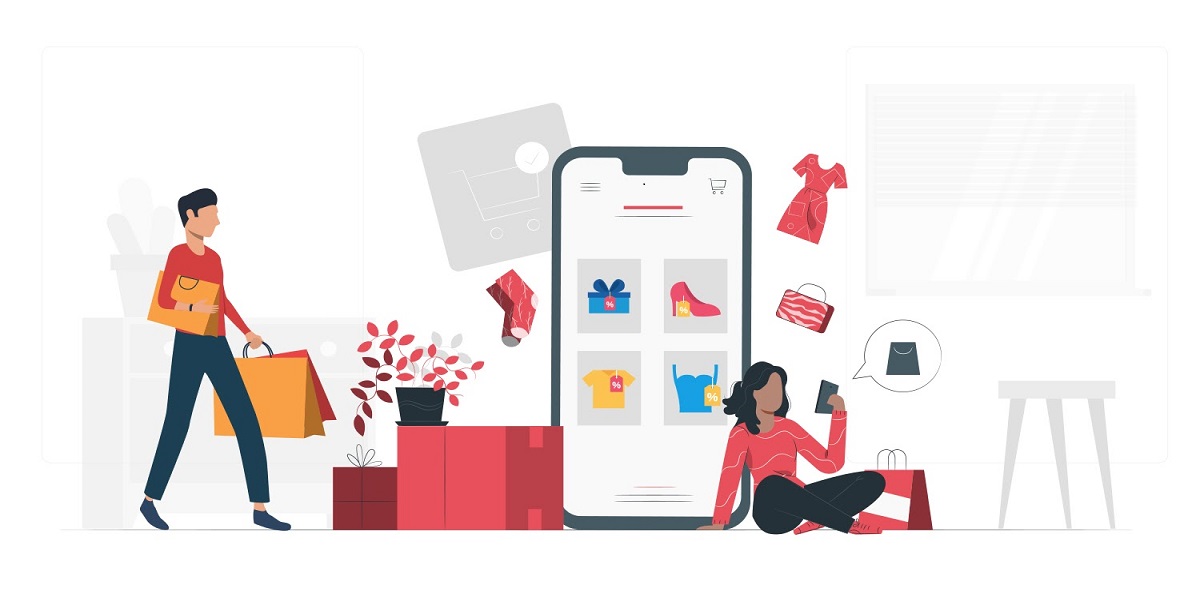Top 7 E-commerce Marketplace Development Trends in 2021
- By Kyle McDermott
- 21-01-2021
- Trends

The revenue generated by eCommerce has reached $3.5 trillion and is expected to hit 4.9 trillion by the end of 2021. Digital transformation made it possible to sell and buy almost every category of product and service. The success story of Amazon is still a cherished dream to many merchants that only begin their journey in online shopping.
The increasing supremacy of E-commerce over offline business is indicative of how much brands and companies should be aware of what is going to happen in the E-commerce sector. To read the future of E-commerce, let’s look at the growing trends that most likely will dominate in the 2021 market.
1. Voice search and ordering
The hectic lifestyle of most people proves that texting is no longer an option. Consumers that spend most of their time on the go would like to have a more comfortable opportunity to make purchases, manage their banking accounts, or browse websites. Voice recognition technology that lies at the heart of voice search will start a new type of E-commerce service that will let buyers go through their journey via voice queries and commands. Voice-based shopping will help more companies increase their ROI and serve more customers, especially if the latter use Alexa, Siri, or other smart assistants.
2. AR & VR
The use of Augmented Reality (AR) and Virtual Reality (VR) for E-commerce purposes is one of the reasons why both technologies have become major trends across many business industries, including E-commerce. Their applications vary, but one or another way each technology is used to offer high-quality product/service demonstration and visualization. AV/VR-driven online shops let consumers see things in a life-like environment. Based on that, users can make a decision about the product’s or service’s ability to meet their expectations.
3. Omnichannel selling
The digital presence is necessary for every merchant as most users prefer browsing web pages in the search of the best product before going to a store and buying it in reality. Omnichannel retail is another leading E-commerce development trend that allows buyers to make purchases online and offline, as well as continue their journey from any device. The omnichannel approach puts the customer in the center, surrounding them with multiple ways to embark on their shopping and providing different offers, communication channels, and personalized recommendations.
4. AI tools
AI technology has a vast potential that E-commerce business owners can easily harness for their own gain. AI-based chatbots and assistants are the most common variant of AI applications. However, one can also leverage it for gaining insights into their target audience’s behavior and making data-driven decisions on how to improve the quality of customer service. The use of AI is also observed in E-commerce companies that want to build more effective algorithms helping to explore the market and predict trends.
5. Mobile shopping
M-commerce is now the biggest share of the E-commerce sector that will rise to 72.9% by 2021. The latest data show that 79% of smartphone users have M-commerce experience and rely on their mobile devices in making purchase decisions. The rise of mobile apps and mobile apps company in recent years has simplified access to brands and marketplaces as a result of which users tend to shop online more often. Moreover, mobile optimization has made many more websites mobile-oriented, thus allowing more users to search through web pages with a smartphone.
6. PWA
A Progressive Web App (PWA) is a new form of software that represents a blending of a native mobile app and a traditional website. Basically, it is a direct link to your E-commerce website. By clicking on your PWA icon, the user is directed to your page, bypassing your potential competitors and saving their time. Unlike mobile apps, PWAs are less costly and easier to design. Moreover, they are good at SEO optimization and allow you to move up your brand’s ranking on Google.
7. Contactless payment methods
Technologies that ensure new payment options will become another interest for E-commerce companies. Today’s trending payment methods include Google Pay, Apple Pay, and PayPal all of which are considered better than traditional credit cards. However, we can expect more advances in payment methods like bitcoin or other alternatives to the current forms of payment. The need for contactless payment methods comes from the consumer’s desire to have a quick checkout process and avoid wasting time on inserting confidential data every single time they want to place an order online.
This article is intended to help marketing teams, entrepreneurs, and E-commerce owners improve their business through digital transformation and innovation.





